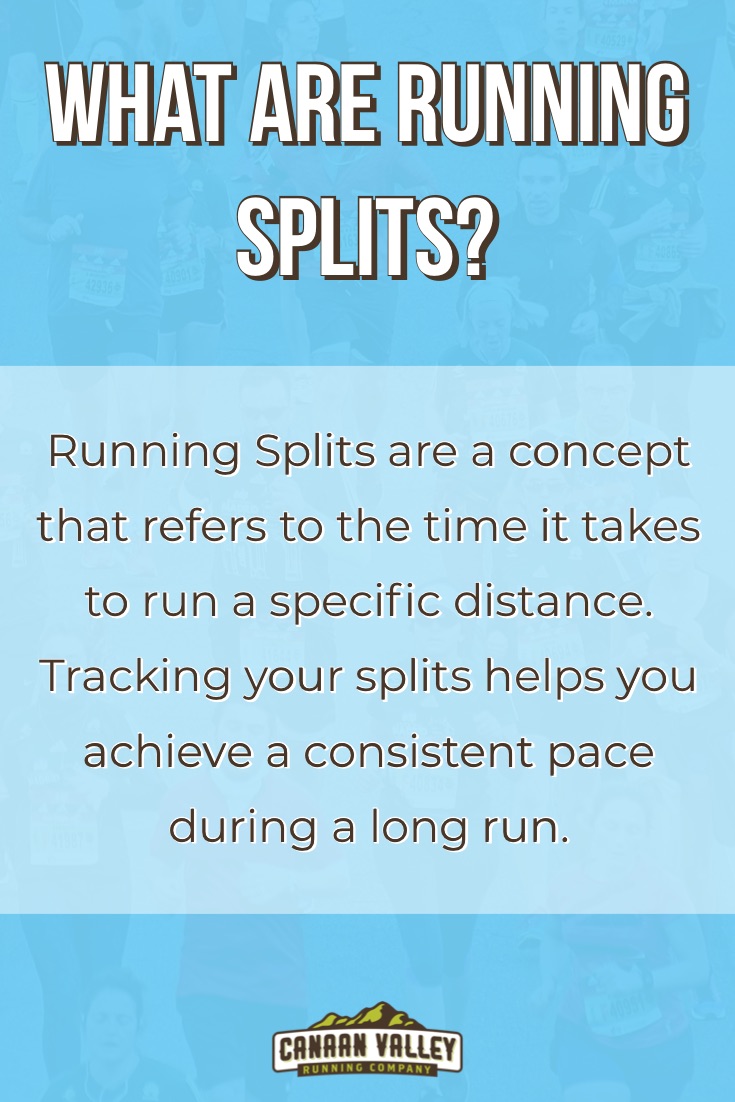We are a participant in the Amazon Services LLC Associates Program, an affiliate advertising program designed to provide a means for us to earn fees by linking to Amazon.com and affiliated sites, this is at NO extra cost to you. These small fees allow us to create great content and keep striving to create better content.

Running Splits
What are Running Splits?
Running splits are a concept that refers to the time it takes to run a specific distance. Tracking your splits helps you achieve a consistent pace during a long-distance run. Some runners use the term pace to describe the time it takes to run one mile.
Introduction
Running splits are a useful tool you should use if you’re training for endurance running. Whether your goal is to achieve consistent splits or negative splits, it’s important to know how to time running splits properly. There are also some strategies you can use to reduce your splits and improve your performance.
Your Guide to Running Splits
Running splits are easy to measure, and they’re a useful tool for tracking your performance during your runs. Here’s what you need to know about calculating your running splits.
What Are the Benefits of Tracking Running Splits?
The main advantage of tracking running splits is to get an accurate idea of how even your pace is. Once you know how long it takes you to run a mile or another distance, you can break down a race into smaller sections and set a target time for each one.
Here’s why you should track your running splits:
- Make sure you’re on track to achieve your target race time and improve it.
- Monitor your average pace and meet time requirements to qualify for an official event.
- Find the right pace and avoid exerting yourself early in your run.
- Adjust your speed during a race if you’re running at a different pace than usual due to the stressful conditions.

Should You Aim for Even or Negative Running Splits?
Achieving even running splits means you can keep a consistent pace. It’s a useful skill for long-distance runners, and working on even splits is a goal that makes sense for beginners.
Negative running splits happen when you speed up in the second half of a race and achieve a shorter mile split. It’s a strategy that can improve your performance during races.
If you’re an experienced runner who trains for marathons or other events, negative running splits is a strategy that can help you build endurance and get better results.
How to Use Splits in Training
Mile splits are a performance indicator you can use to assess your pace and set goals. You can measure your stride rate or speed, but splits are more accurate for long-distance runs.
Here is how you can use mile splits to set new goals and keep challenging yourself:
- You can aim to reduce your average mile split.
- You can work on achieving consistent mile splits to work on your pacing.
- Your goal could be to achieve negative splits if you want to train for a marathon or other long-distance event.
Top Strategies for Reducing Your Split Time
If you’re new to using running splits, you should start by getting a feel for your speed and pace. Here are some strategies you can use:
- Run laps on a track. A standard lap is a ¼ mile. Running four laps will help you get a sense of what a mile feels like, and you can practice even pacing over small distances.
- Listen to music. Matching your strides to the beat of the music helps you achieve a more consistent cadence.
If you want to use the music technique, we recommend 180 BPM songs. This YouTube playlist is a great place to get started.
Once you develop a feel for your pace and cadence, you can start working on timing your stride rate per minute and increasing it. Professional distance runners can take 180 strides per minute! Running downhill is an exercise that can help you increase your stride length and rate.
Going on a tempo run is an exercise you can add to your weekly routine to improve your running splits. A tempo run is a run you complete at a slower pace than usual. You would typically add 30 seconds per mile compared to your average splits for a 5K race.
The idea of a tempo run is to adopt a pace that you can sustain for an hour or more without getting tired. You will run at a slower speed, but you will develop more resistance to fatigue. Your gains will help you decrease your average mile splits when you run at a normal pace.
Progression runs are another technique you can use to improve your mile splits. A progression run is a run that gets more challenging over time. You can head to an uphill area for the second half of your run or incorporating stairs into your route.
If you’re training for a marathon, this YouTube video has some great advice for incorporating splits into your training.
How to Calculate and Time Splits Accurately
You can calculate your target time by dividing the total target time of a race by its distance in miles:
- If you’re training for a marathon, divide your target time by 26.2 to get your target time per mile split.
- If you want to run a 10K race, divide your target time by 6.2
- Divide your target time by 3.1 if you’re preparing for a 5K event.
You can time your current mile splits by heading to a track. A standard lap is ¼ mile, so timing four laps would give you a mile split.
If there is a road with mile markers where you can run safely, use the timer on your phone to measure how long it takes you to run a mile.
If you don’t mind running on a treadmill, most high-tech models will calculate your running splits automatically.
You will get a more accurate measure of your mile splits with a GPS watch or activity tracker designed for running. These devices can track distance and have built-in timers. You can measure your mile split and see how this data point changes throughout your run.
Some devices like the Polar Vantage M can even measure your stride length, and a watch like the Garmin Forerunner 245 will measure your step count along with your speed and distance.
GPS Watches for Helping with Running Splits
Final Thoughts
Being able to pace yourself is an essential skill for running long-distance. Split miles are a concrete way to keep track of your pace and help you set target times for the different sections of a race. Whether your goal is to achieve a consistent pace or negative splits, it’s a tool that will help you perform better.

Robby McClung
This article was written by the editorial staff of the Canaan Valley Running Company and Robby McClung. Robby is the founder of the Canaan Valley Running Company. You can read more in the about section of the website on Robby and the Canaan Valley Running Company.










